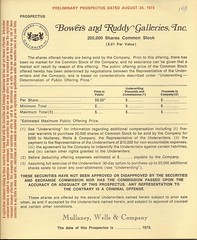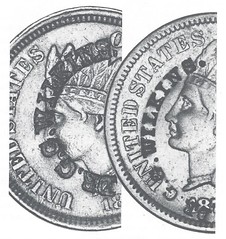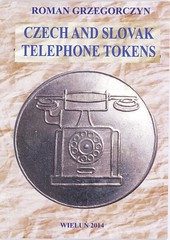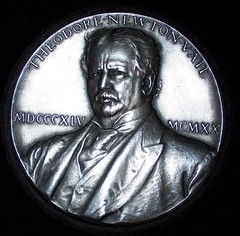
PREV ARTICLE
NEXT ARTICLE
FULL ISSUE
PREV FULL ISSUE
WAYNE'S NUMISMATIC DIARY: JUNE 15, 2014Tuesday night was the regular meeting of Nummis Nova, my Northern Virginia numismatic social group. Our members take turns picking the venue, and this month Lenny Goldberg was our host. He picked a nice little place in Washington D.C., the Parthenon Greek restaurant on Connecticut Avenue. It wasn't hard for me to find, but parking was a bit of a challenge for all of us. But we managed. The night would be memorable for more than the location - attendance was unexpectedly low. People dropped out like flies with work and personal commitments, and lame excuses like "a kidney stone". Nonetheless, those of us on hand had great meals and a great time. Already present when I arrived were Jon Radel, Eric Schena and my guest, E-Sylum reader and contributor Fred Michaelson. Knowing he's from Baltimore and that this location wouldn't be too far for him, I invited him along. In an email I told him "I look like my E-Sylum photo, only older and fatter." He wrote, "I'll be the one older and fatter than you." Soon Gene Brandenburg, Dave Schenkman and Lenny arrived. Gene lost no time in reviewing the wine list, only to hear that choice after choice was sold out. But the third time was a charm and he picked a good one. I enjoyed a couple glasses with my dinner. I passed around some ephemera I recently acquired from the John Burns estate. The first brought back a lot of memories. It was a poster I'd created back in the late 1970s at the University of Pittsburgh, while trying to start a coin club. One of the first to respond was John, who became a friend for life.
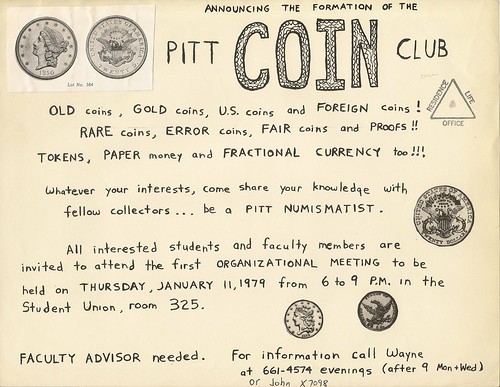
Remember, those were the days before personal computers and laser printers. The highest high-tech available to most people was a Xerox machine. The coin images were cut from a Stack's catalog I'd received after somehow getting on their mailing list. John was (rightfully) HORRIFIED that I would damage a piece of numismatic literature. I promised not to do it again. Of course, all week long now I cut and paste pictures for The E-Sylum, but thanks to the magic of computers, no catalogs, books or web sites were harmed in the production of this newsletter.
Lastly, I had a group of 19th century coin dealer receipts and correspondence from a Money Tree sale (Lot 516, MBS #20). Here's a Tom Elder items, discussing the first lifesaving medal issued by Congress.
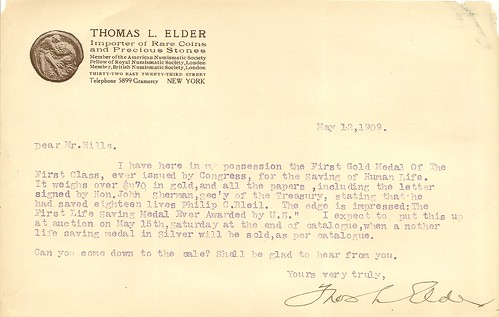
Here are the coins he showed us. I got a good belly laugh out of his display. 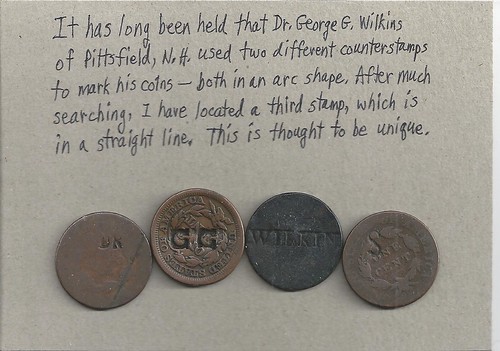
Jon Radel can always be counted on for some interesting new acquisitions. First up was a telephone token.
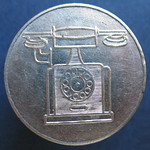

Telephone token, Grand Hotel Šroubke, Prague. 27mm Nickel plated iron. Grzegorczyn# 4-09.4 Jon Radel writes:
Notwithstanding that rather prominent typo, now corrected, the 59 page, softbound book is the most comprehensive listing of Czech and Slovak telephone tokens available in print, covering tokens ranging from those issued by the Germans for Bohemia and Moravia, to the phone company's test tokens, to the private tokens of a variety of hotels. While comprehensive, and well-illustrated with color photographs, I find it a pity that it is "only" a listing, and doesn't include any information on the historical background of any of the tokens or issuing entities. Of course, as always, it's nice to leave something to do in the second edition, and this is a very useful book as stands.
For more information about this medal, see Jon's article elsewhere in this issue.
Eric Schena writes: The dinner at the Parthenon near my old high school stomping grounds in NW DC was fantastic, as always. My lamb souvlaki was particularly excellent, plus a lot of great numismatica was passed around. I brought several tokens to the dinner that I recently acquired, including a number of neat Virginia Ingles and an example of Krider's 1881 Surrender at Yorktown, VA Centennial medal (Baker 452C). One neat thing of note that I brought was a neat maverick token that Dave Schenkman and I "tag-team" attributed to a saloon/poolroom proprietor and beer distributor in Manassas, Wade Goodwin. This token will be listed in Dave's upcoming revision of Virginia Tokens. Turns out Goodwin had quite a story. See elsewhere in this issue for Eric's article on the Goodwin token. Dave Schenkman had a quiz question for us - he asked, "How many different denominations of American trade tokens are there?" I clarified that he wasn't looking for "payables" such as tokens payable in bread, tokens, dynamite, etc., but just dollar-and-cents amounts. I thought about it for a minute. I knew that there were a LOT of different denominations, with nearly every number from 1 to 100 covered, plus fractions and multiples. So I assertively blurted out my back-of-the-envelope estimate: "Uh, I dunno, maybe 100?" It turned out that I was closer than many others he'd asked, including Joe Levine. But I was still way off. To learn the answer, be sure to attend Dave's talk at the upcoming Whitman Baltimore Coin Expo. Here's a blurb and some token images provided by Dave: Have you ever seen a trade token with a 4 1/6¢ denomination? What about 8 3/10¢ token? 14¢? If you answered “no,” and you are attending the Whitman Coin & Collectibles Expo. at the Baltimore Convention Center later this month, you might enjoy spending an hour at David E. Schenkman’s PowerPoint presentation, the sixth in the Maryland State Numismatic Association’s Distinguished Lecturer Series. Schenkman’s talk is titled “Collecting by the Numbers; A Look at Trade Token Denominations.” If you are not already a token collector, this will provide you with a good introduction to the popular trade token specialty. And, even the most experienced token collector will probably see items he never knew existed. Admission is free, and the talk is on Friday, June 27, at 1 PM in room 301.
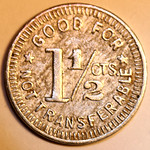
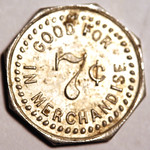
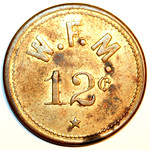

QUICK QUIZ: Who's sharp enough to tell us who issued these odd denomination tokens? Lest anyone think E-Sylum ads don't work, note that our own Eric Schena is now a part-time cataloguer at Stack’s Bowers Galleries. Eric had a copy of the firm's latest catalog, which contains quite a number of lots which include his descriptions. He answered a number of our questions about the job, which he clearly enjoys. The next day I shared with Eric a nice note from Stack’s Bowers Galleries President Brian Kendrella, who wrote: Thank you for your introduction to Eric Schena. He is a great fit and contributed significantly to the cataloging of our June sale. During the meeting I got an email on my phone from Walter Breen's daughter Moira. She had seen some earlier E-Sylum articles and offered to answer questions about her father. More next week, perhaps. If you have questions, send them to me. Before leaving, Jon Radel, Eric Schena and I touched on the topic of the upcoming July 26 Kids' program at the Annandale Coin Show. I started the event after moving here, modeling it after one I'd started back in Pittsburgh (and still going strong at the Pennsylvania Association of Numismatists shows). Jon and Eric have become greatly involved. Eric writes: As for the kids' program, that is just plain fun. They remind me of myself at that age and if I can help just one kid become a lifelong collector and hopefully a scholar, then I would say my job as a numismatist has been a success. Speaking of kids, I paid with a $100 bill I'd gotten at the bank for my son Tyler. He'd saved up money he'd earned from chores and wanted one of the new notes I'd shown him when they first came out. I went back to my bank and asked, "Do you have any of those new $100 bills with the laser beams and stuff?" They knew what I meant - the one with all the new high-tech anti-counterfeiting features. I got it and took it home to him, but his Mom ("Dr. No") vetoed it. "It's stupid - he's only going to have to break it the next time he wants to buy something." "And that's a problem because....?" No matter. Mom had spoken, and I'm not allowed to win any arguments. So I kept the bill, but I'm still shaking my head over the whole thing. What's so wrong with letting the kid have his $100 bill, even for a brief, glorious moment? One day he'll come back and flash a wad of them, just because he can. Anyway, it was another great evening of numismatic fellowship. I was so full from my meal I didn't realize I'd left a Greek restaurant without ordering baklava. That is just sooo wrong. Maybe next time.
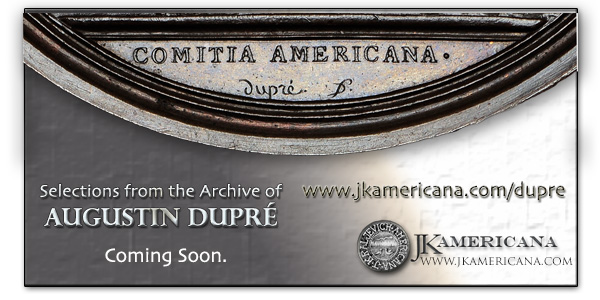
Wayne Homren, Editor The Numismatic Bibliomania Society is a non-profit organization promoting numismatic literature. See our web site at coinbooks.org. To submit items for publication in The E-Sylum, write to the Editor at this address: whomren@gmail.com To subscribe go to: https://my.binhost.com/lists/listinfo/esylum All Rights Reserved. NBS Home Page Contact the NBS webmaster 
|
